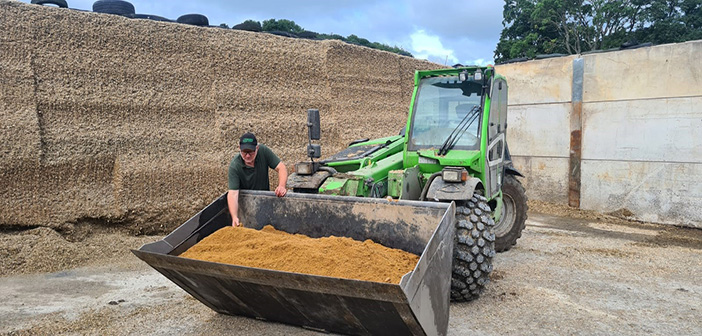Given the variable quality of forage on dairy farms this year, getting supplementation right is key.
UK nutritional supplement manufacturer UFAC-UK said an understanding of the genuine energy values for the cow is therefore crucial if an accurate assessment of the energy content of feeds is to be achieved.
While forage analysis is a key building block when formulating a diet, understanding the role of fatty acids and the true energy content of different oils and fats, is crucial to optimise performance and health with tailored supplements, while also controlling costs.
Mike Chown, ruminant technical manager with UFAC-UK, said: “The key is to optimise rumen microbial proteins. In practical terms, we need to look at the forage analysis, and to understand how it performs, we need to look at the digestibility of NDF.
“Consider the ADF and lignin levels. The lower the ADF, and particularly lignin, the greater the digestibility. You can’t just look at energy levels and wonder why the forage isn’t milking, without comparing digestibility percentage with NDF.”
Balancing energy sources in the diet has been a key element of a raft of measures implemented by Giles Rowland of Rowland Partners, improving efficiencies and performance at his 380-cow enterprise in Denbighshire, while helping to reduce the carbon footprint.
He said: “You can’t just take energy values off the paper, we need to understand the true energy levels and balance with supplementary fats. We have certainly found, by using the palm-free fat supplement Dynalac, it seemingly does better than it says on the tin.”
Mr Rowland has been using some form of supplementary fats for over 20 years, moving to a palm-free alternative fat supplement around 10 years ago. The unique combination of fatty acids in Dynalac has increased the energy density of the diet at the dairy unit, while also helping to maintain body score and boost fertility.
Several factors determine the overall Metabolisable Energy (ME) that is available to the cow, including digestibility. At 27 MJ/kg DM, the more sustainable Dynalac has the same energy as a calcium soap (NRC 2001), so it increases energy density of the diet, crucial for high-yielding dairy cows, especially in early lactation.
“The supplement also supplies C18:1 fatty acid, helping to reduce body condition loss, especially in early lactation. In addition, long chain Omega 3 fatty acids help support fertility and also gives the immune system a boost,” said Mr Chown.
Mr Rowland added: “Balancing energy sources in the diet is both helping me meet my environmental responsibilities and aims, while also improving performance. Dynalac is a key component of an overall commitment on our unit to focus on efficiency and sustainability.”


